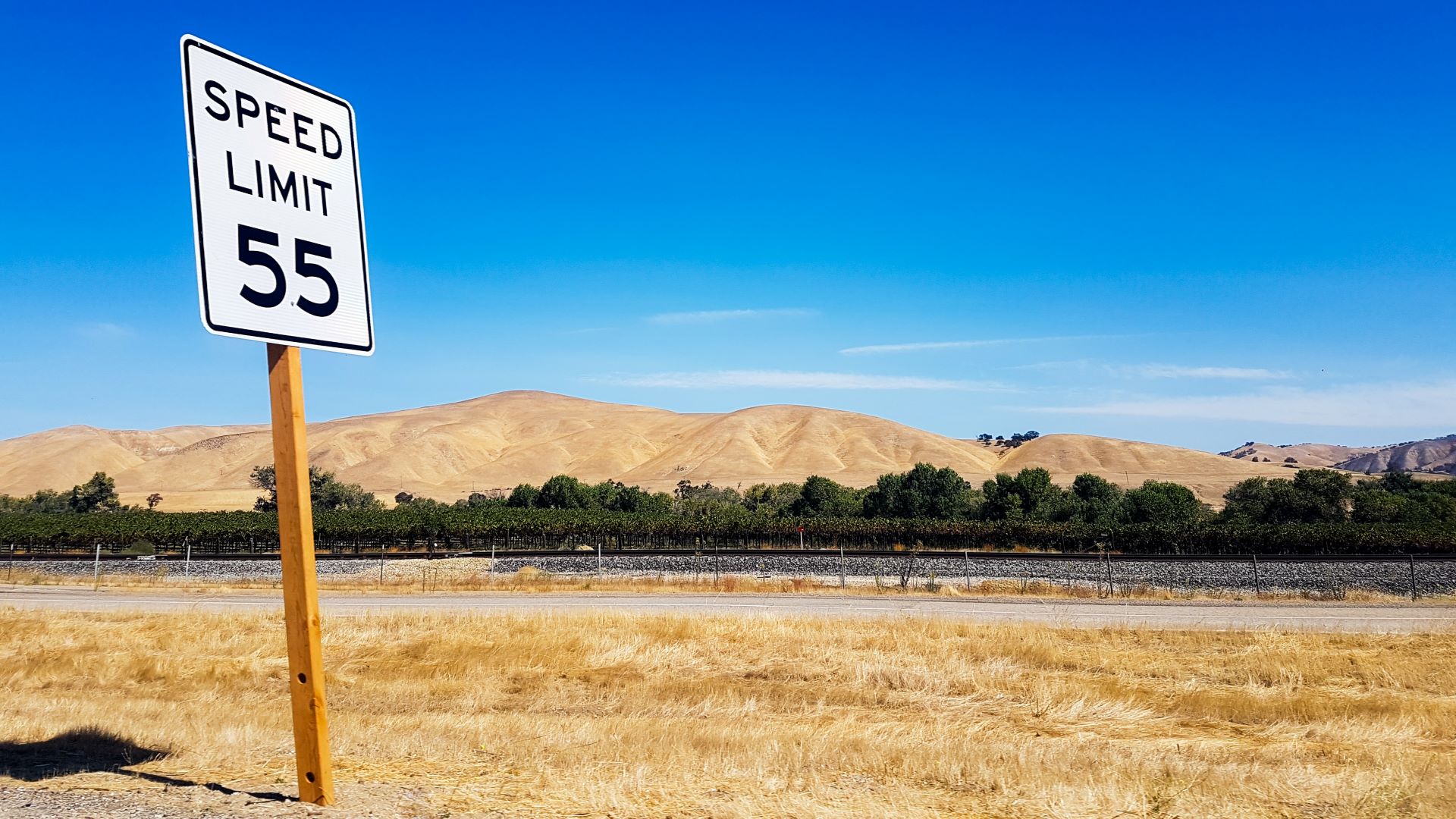Frequently, arguments are made during lawsuit discovery concerning posted speed limits that are greater than the design speed of the roadway. For example, someone will argue that since the roadway has a design speed of 45 mph, it should not have a posted speed limit greater than 45 mph.
While that argument on the surface makes sense, read on for a few legitimate reasons why a posted speed limit may be greater than the roadway’s design speed.
There are essentially three types of vehicular speed used in highway design and traffic engineering; design speed, operating speed, and posted speed (or posted speed limit). As defined by AASHTO, design speed is “…a selected speed used to determine the various geometric design features of the roadway,” and operating speed is defined as “The speed at which drivers are observed operating their vehicles during free-flow conditions.” A posted speed limit is determined either by prima facie speed limits, which are set by a public entity when no other specific speed limit is posted, or by an engineering study.
It is common for speed limits that are less than maximum prima facie speed limits to be determined based on a spot speed study. A typical spot speed study measures the speeds of a large group of vehicles operating at free flow conditions, and then selecting the 85th percentile speed as the speed limit. The 85th percentile speed is the speed at which 85 percent of the vehicles measured were traveling either at or below and is then rounded either up or down to get a value divisible by five to determine the posted speed.
Neither the prima facie speed, nor the posted speed limits established by spot speed studies take in to account the design speed of the roadway which has the posted speed limit. That is because design speed really has nothing to do with the posted speed, and only affects the operating speed to some extent.
When a designer begins to design a new highway or roadway, the first question that must be addressed is the type of roadway it will be. Once that is determined, the appropriate design speed can be selected. Normally, the design engineer will select a design speed appropriate for the type of roadway and location of that roadway. Assuming that the roadway is expected to have operating speeds in the range of 35 to 40 mph, the highway designer may select a design speed of 45 mph. Selecting this design speed simply means that the horizontal and vertical curvatures of the roadway will always provide the minimum design stopping sight distance for 45 mph established by AASHTO.
Design engineers use “absolute minimum” horizontal curve radii and “absolute minimum” rates of vertical curvature (or “K”) values for vertical curves when necessary. Because of this, the designed roadway may not have any horizontal or vertical curves close to the minimum values associated with a 45-mph design speed but are more characteristic of a 50 or 55 mph design speed. In addition, the roadway may have wide travel lanes and paved shoulders (which are not related directly to design speeds) and the more “wide open” roadway environment may encourage higher operating speeds.
Therefore, it is quite possible that the posted speed limit on this “45 mph design speed roadway” will be higher than 45 mph. Factors of safety are also incorporated into design criteria, so roadways designed with the minimum horizontal curve radii and minimum “K” values for vertical curves will have typical operating speeds greater than the design speed, especially during dry weather conditions with dry, smooth pavements.
For more information on design, operating, and posted speeds, see the 1995 Texas Transportation Institute publication, “Compatibility of Design Speed, Operating Speed, and Posted Speed” authored by Kay Fitzpatrick and others, or give us a call at (979) 693-5800.

